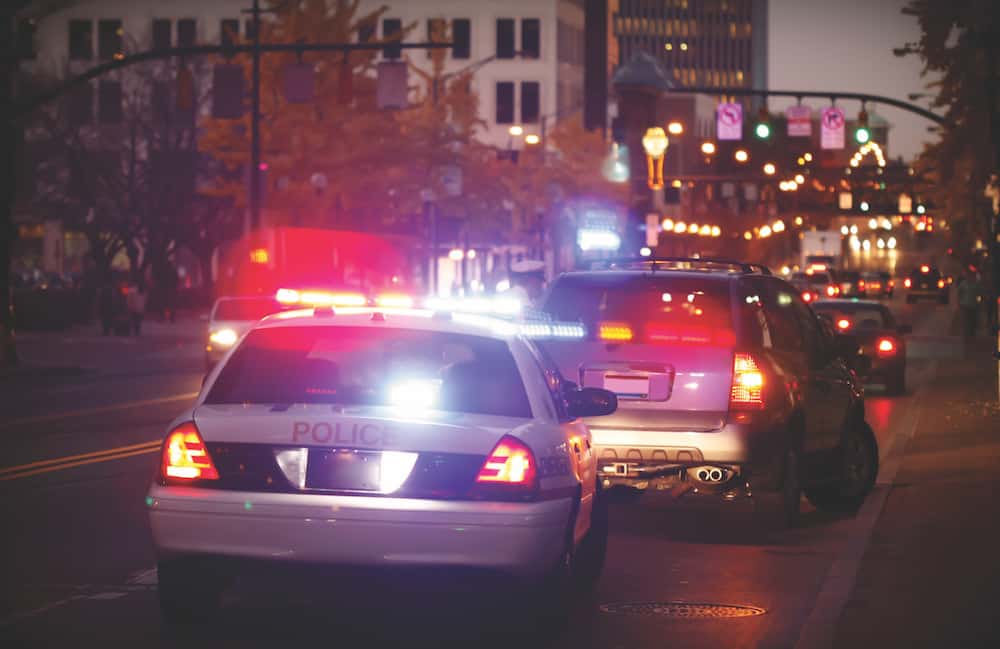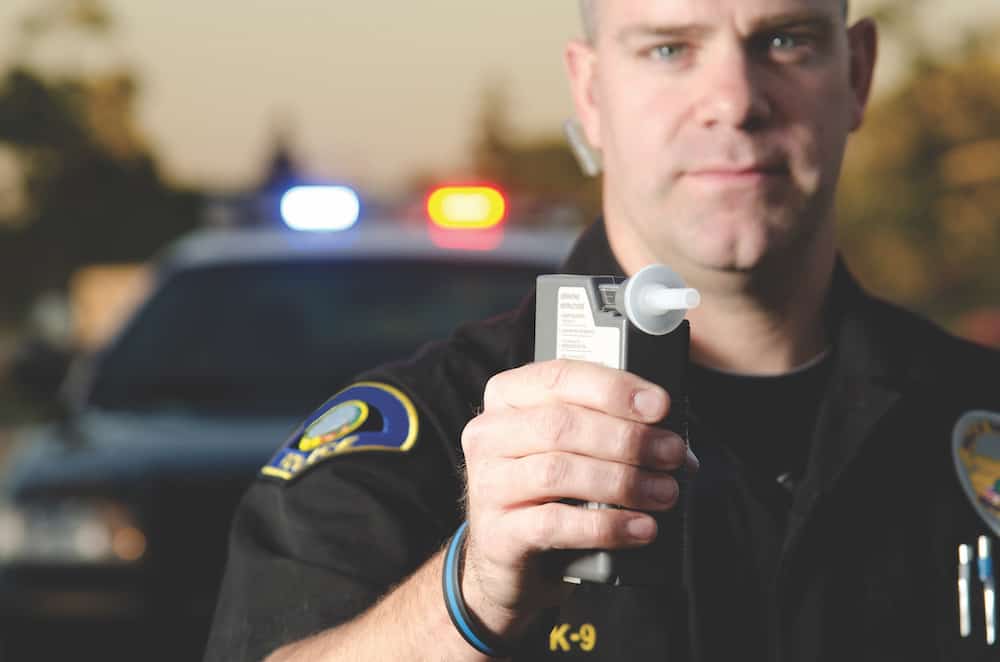Driving High
While experts agree that stoned driving cannot be regulated in the same way as drunk driving, the question remains: Can legislators and law enforcement meet the unique challenges presented by cannabis consumption behind the wheel?
Every few weeks, Chris Halsor has volunteers in Colorado take part in a scenario that at first blush seems too good to be true. He transports them, free of charge, to a respectable hotel where, in a comfy, goody-filled RV in the parking lot, he has them get really high.
There’s only one rub: After they’re nice and stoned, they’re escorted to a hotel conference room filled with prosecutors and cops.

For the next several hours, the volunteers are probed, prodded and analyzed by the very people cannabis users usually try to avoid at all costs. The goal is improved public safety. Halsor, a Colorado attorney and former public prosecutor, is the founder of Green Lab, a first-of-its-kind endeavor that allows law-enforcement personnel and others to learn about cannabis impairment by witnessing it, up close and personal. Modeled on “wet labs,” the longtime training scenarios in which cops observe drunk people to better understand alcohol inebriation, Halsor designed the program to help police officers correctly identify people who are too high to be on the road, especially in states where cannabis laws are shifting (Halsor recently expanded his services to California).
“It’s a big paradigm shift of law enforcement and prosecutors to adjust to some of these changes,” Halsor says. “The idea behind it was to help law-enforcement officers improve their ability to detect and investigate marijuana-impaired driving cases.”
After several years of running the program, Halsor knows more about cannabis impairment and driving than nearly anybody. And what he’s learned has caused him to reevaluate his stance on laws that base cannabis impairment (and driving-under-the-influence charges) on specific THC levels in a person’s body, similar to how alcohol inebriation is based on blood-alcohol levels. He used to support such rules, which are being implemented in a growing number of states around the country. Now he’s changed his tune.
“We are used to a [blood-alcohol] number,” Halsor says. “A number like that for cannabis would make it all gel together. But I wouldn’t advocate for new states coming on board to adopt such an approach. I don’t know if it really serves what we thought it was going to serve.”
One of the few things law enforcement and cannabis advocates tend to agree on is that people who are too high to drive should be kept off the road. But as lawmakers pass new rules about driving while high and tech companies rush to perfect cannabis breathalyzers, such efforts are coming into direct conflict with a growing body of evidence that suggests when it comes to cannabis and driving, there’s a lot we still don’t know. So, if the old tests and approaches won’t work, how are we ever going to know which cannabis users should be behind the wheel and which definitely shouldn’t?

When marijuana was still illegal from coast to coast, cases involving marijuana and driving were relatively straightforward: If you were caught with any amount of marijuana in your system while on the road, you were likely going to be in trouble. “For a long time, cannabis was an afterthought in the world of driving-under-the-influence lawmaking,” says Alex Kreit, a marijuana-law expert and director of the Center for Law and Social Justice at the Thomas Jefferson School of Law. “For a long time, there was a push to standardize blood-alcohol laws, and there wasn’t much attention on substances other than alcohol.”
But as states started legalizing medical and recreational cannabis use, lawmakers had to determine how much marijuana use is too much when you’re behind the wheel. Borrowing from the idea that cannabis should be regulated like alcohol, many of these officials looked to the laws and tests that have long been used to identify drunk drivers. In other words, they began basing cannabis inebriation on the amount of cannabis found in the body.
Four states—Colorado, Illinois, Montana and Washington—have passed laws decreeing that anyone caught on the road with five nanograms or more of THC per milliliter of blood is considered to be driving under the influence of cannabis. Two other states—Nevada and Ohio—set the limit at two nanograms per milliliter of blood. All of these states save one have so-called “per se” rules, meaning if you’re caught on the road while over the blood-level limit, you’re considered guilty of drugged driving. Colorado, however, passed a “permissible inference” version of the law, meaning if you’re caught driving while over the five-nanogram limit you’re presumed to be guilty, but you’re allowed to argue in court that you weren’t actually impaired.
Experts believe that as cannabis prohibitions continue to wane, other states will likely follow a similar tack. “As more and more voters are showing their tolerance for state-legal marijuana, legislators aren’t necessarily going to be up to speed on the issue and are going to copy what states like Colorado and Washington have done,” says Skyler McKinley, director of public relations and government affairs at AAA Colorado. “They are going to get these laws on the books as part of these big packages of legislation.”
That means a growing number of states will likely end up with nice, tidy rules on which to base cannabis-and-driving cases. There’s only one problem: Scientifically, everyone agrees these rules don’t make much sense.
For starters, unlike these new cannabis traffic-safety laws, blood-alcohol limits for driving weren’t hashed out over legislative bargaining tables. They were carefully determined through extensive and meticulous car-crash studies in the late 1960s overseen by the country’s first traffic czar, William Haddon Jr., a trained epidemiologist. The result was a pioneering set of laws based on science, not politics.

Alcohol was uniquely suitable to regulations and tests based on biological indicators, such as blood-alcohol concentrations and alcohol levels on a subject’s breath. That’s because unlike the vast majority of drugs, the relationship between alcohol levels in the body and alcohol intoxication remain markedly constant from one person to the next.
“Alcohol is conveniently emitted through your breath in amounts that correctly predict intoxication and impairment. That is not the case with most drugs,” says Ryan Vandrey, an associate professor at Johns Hopkins University School of Medicine who studies the behavioral pharmacology of cannabis. “People often say, ‘We have a breathalyzer for alcohol, why don’t we have one for cannabis?’ Well, we don’t have a breathalyzer for any of the hundreds of other things that can impair your driving.”
Cannabis impairment, on the other hand, doesn’t seem to track consistently with THC levels in a subject’s system at all. Intoxicating effects can vary widely depending on the method of consumption, and longtime marijuana users tend to build up a tolerance to its performance-impairing effects. In other words, it’s possible that a first-time cannabis user could be in no shape to drive with less than five nanograms of THC per milliliter of his blood, while a regular cannabis consumer could have far more than that level long after all the intoxicating effects of her last smoke session have worn off.
To get to the bottom of the matter, in 2015 the AAA Foundation for Traffic Safety commissioned a study to determine whether there was any correlation between blood concentrations of THC and driver impairment and crash risk. The study results were decisive, says lead author Barry Logan, chief of forensic toxicology at Pennsylvania-based NMS Labs and a leading figure in drug-impaired-driving research. “Our conclusion was you are not going to find a blood concentration level for cannabis that is a useful tool for deciding whether someone is under the influence or not,” says Logan. “You can’t really say anything based on the number.”
Thanks to findings like that, both the American Automobile Association and the National Safety Council now recommend against states basing cannabis and driving laws on cannabis-blood-concentration levels. Even the National Highway Traffic and Safety Administration has conceded in past reports that “It is difficult to establish a relationship between a person’s THC blood or plasma concentration and performance impairing effects.”
It’s possible, however, that researchers will eventually find a reliable way to draw a parallel between impairment and evidence of cannabis in the body. Vandrey, for example, is working on a new study that will scrutinize a variety of biological markers to see if any correlate consistently with impairment. But even if scientists do hit upon a way to gauge cannabis intoxication through something like a blood test, there’s another problem. “THC drops precipitously after somebody stops using cannabis,” says Logan. “THC levels fall by about half in 20 minutes, and in about an hour it’s about 20 percent of what it was originally. So in the real world, by the time someone is pulled over, given a roadside sobriety test, then brought to a hospital and had blood drawn, that number won’t tell you anything about the number they had when they were driving.”
It’s why the race is on to develop a cannabis breathalyzer that officers can use as soon as they pull somebody over. And there are indications that such devices could soon hit the streets. One of the big challenges for marijuana breathalyzers is tied to the vapor pressure of cannabis, which is an indication of its evaporation rate. Ethyl alcohol has a high vapor pressure, meaning its molecules are constantly escaping into the air—which is why the smell of alcohol is so pungent and it’s fairly easy to measure the substance on someone’s breath. On the other hand, THC’s large and complex molecules have such a low evaporation rate its vapor pressure had never been accurately measured, until scientists at the National Institute of Standards and Technology laboratory in Boulder, CO, used a pioneering technique to do so earlier this year. The discovery could be used to develop and calibrate future breathalyzers. “One application of the vapor pressure of THC would be to help calculate the level of THC you collect on someone’s breath and correlate it back to the THC concentration in his or her blood,” says Tara Lovestead, a NIST chemical engineer and the lead author of the study.
The fact that we’re still learning about THC’s fundamental physical properties is only one of the reasons why companies working to develop breathalyzers have been laboring for years without anything promising yet hitting the market. “THC exists in your breath in parts per trillion. You compare that with alcohol, which is in the parts per thousand. You have to be a billion times more exacting,” says Mike Lynn, CEO of Hound Labs, one of the main firms working on the challenge. “It’s like looking for a few specific drops of water in a hundred swimming pools put together. We had to figure out some pretty clever ways to identify the THC in such vanishingly low concentrations.”
Lynn insists his company has figured out a way to do so, however. He says the resulting Hound breathalyzer is in the final stages of testing and will launch in 2018 with a retail price between $500 and $1,000, similar to alcohol breathalyzers. But he’s quick to note that while his device will detect THC on someone’s breath, indicating he or she recently consumed the drug, its measurements say nothing about cannabis-blood concentrations—one more indication that driving laws based on cannabis-blood levels don’t make any sense. “All you can say is if you can measure THC in your breath, it is absolutely in your bloodstream,” says Lynn. “But you can’t see how much is in your blood. It’s one of the reasons it’s been so unfair to have these blood standards. They don’t correlate to any sense of impairment.”
The good news is that even if driving laws based on cannabis-blood levels aren’t effective, marijuana legalization hasn’t led to a spike in cannabis-fueled car accidents. In both Washington and Colorado, for example, government officials note traffic safety hasn’t been negatively impacted by the states’ new recreational-cannabis markets. Reports like this lead Paul Armentano, deputy director of the National Organization for the Reform of Marijuana Laws, to call these new cannabis-driving laws “a solution in search of a problem.” After all, Armentano points out, “The bottom line is driving under the influence of marijuana or any intoxicating substance is already a traffic-safety violation in all 50 states.”
It’s why many policy experts recommend that instead of passing unnecessary and scientifically dubious new laws about cannabis and driving, lawmakers should instead be making sure police officers are correctly trained to recognize the physical signs of impairment when they pull someone over, no matter what substance caused the impairment or what might be found in a blood test. “If I am a policymaker, I would avoid these THC blood limits at all cost,” says McKinley at AAA Colorado. “The wise choice in public policy is to have dedicated funding that creates training programs for drug-recognition experts, which are the peak law-enforcement officers trained to recognize drug impairment.”
Halsor thinks his Green Lab program is a practical alternative to unwieldy and unrealistic new cannabis-driving laws. Not only are his sessions helping law-enforcement personnel understand when they should bust someone for cannabis impairment and when they shouldn’t, but the events are also breaking down social barriers. “When we first started, we hoped that by putting police officers and cannabis users in the same room, they might learn from each other,” Halsor says. “We didn’t know that was going to happen, but fortunately it did. In the absolute majority of cases, both Green Lab volunteers and police officers have walked away thinking they have a little better understanding of each other.”
This feature was published in the April 2018 issue of High Times magazine. Subscribe right here.
The post Driving High appeared first on High Times.


